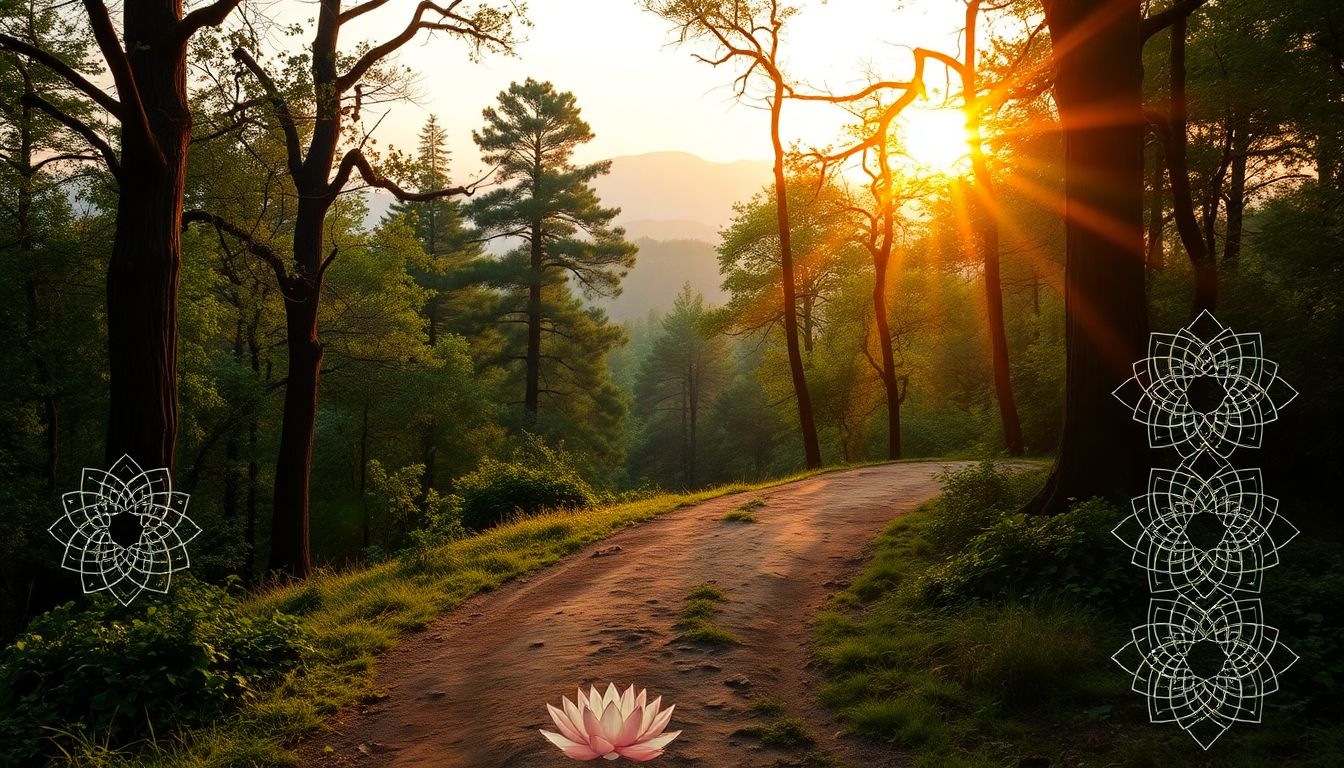Path of Wisdom (Sankhya Yoga): The Ultimate Guide to Inner Enlightenment and Self-Realization
Sankhya Yoga is more than just a spiritual path; it’s a way to discover your true self. This school of thought in Indian philosophy has been guiding seekers for thousand of years towards inner peace and clarity. Imagine having a clear mind, free from doubts and worries—that’s what Sankhya Yoga promises. Its roots stretch deep into ancient texts like the Bhagavad Gita, making it relevant even today. If you’re looking for a method to grow inside and find lasting happiness, understanding the Path of Wisdom can be life-changing.


Path of Wisdom (Sankhya Yoga): The Ultimate Guide to Inner Enlightenment and Self-Realization
Introduction
Sankhya Yoga is more than just a spiritual path; it’s a way to discover your true self. This school of thought in Indian philosophy has been guiding seekers for thousand of years towards inner peace and clarity. Imagine having a clear mind, free from doubts and worries—that’s what Sankhya Yoga promises. Its roots stretch deep into ancient texts like the Bhagavad Gita, making it relevant even today. If you’re looking for a method to grow inside and find lasting happiness, understanding the Path of Wisdom can be life-changing.
Understanding Sankhya Yoga: The Philosophical Foundation
What is Sankhya Yoga?
Sankhya Yoga is a system of philosophy that focuses on knowledge and discernment. Unlike other paths of yoga, like Bhakti or Karma Yoga, it emphasizes understanding the nature of reality. Sankhya teaches that by knowing the difference between real and temporary, you can reach liberation. It aims not just at spiritual goals but at gaining clarity about life itself. Think of Sankhya as your mental toolkit for truth, helping you see through illusions and misconceptions.
Historical and Scriptural Origins
This philosophy traces back to ancient India, mainly appearing in texts like the Bhagavad Gita. The sage Kapila is credited as the founder, sharing ideas on the distinction between consciousness and matter. Over centuries, Sankhya became a core part of Indian thought, influencing other yogic paths. Today, it remains a vital foundation for those seeking spiritual knowledge, blending logic with spirituality. Its long history shows its enduring power to transform minds and hearts alike.
The Key Concepts of Sankhya Yoga
At its heart, Sankhya is about understanding two main ideas:
- Purusha (Consciousness): The true self, pure awareness that never changes.
- Prakriti (Nature): The matter, emotions, and physical universe that constantly change.
Sankhya explains that life is about discerning between these two. The more you develop insight into this duality, the closer you come to freedom. It’s a lot like watching shadows on a wall—knowing the source is the key to understanding what’s real.
The Path of Wisdom: Core Principles and Practices
Discrimination (Viveka) as a Foundation
Viveka means learning to tell what is fleeting from what is everlasting. In practice, it’s about recognizing that material things won’t bring lasting happiness. You can train yourself to see through illusions. For example, realizing that wealth, fame, or even health are temporary can help you focus on what remains—your inner self. Studies show that good decision-making often hinges on this clear discrimination, helping reduce regrets and stress.
Detachment (Vairagya) and Mind Control
Vairagya is not about denying life but about not clinging to it. It teaches us to watch emotions and desires without becoming overwhelmed. Techniques like meditation, mindful breathing, and journaling help cultivate this calm detachment. When you learn to detach, your mind becomes stronger and more resilient. It’s like putting down a heavy backpack—your steps become lighter and more focused.
Self-Study and Self-Realization
Looking inward helps you understand who you really are. Practices like meditation, reflection, and journaling are simple ways to build self-awareness. For example, spending 10 minutes daily in quiet contemplation can reveal hidden thoughts or patterns. Many people have used these methods and found a profound sense of peace and purpose. It’s about peeling away the layers that cover your true nature.
Knowledge (Jnana) as a Path to Liberation
Jnana means direct knowledge of your true self. It involves studying spiritual texts, contemplating their meaning, and applying insights to daily life. This kind of wisdom walks hand-in-hand with experience—knowing about yourself through practice and reflection. When you understand that your true self isn't limited by physical or mental states, liberation feels within reach. It’s like waking up from a long dream.
Practical Applications of Sankhya Yoga in Daily Life
Health and Well-being
Applying Sankhya’s principles can improve mental health and reduce stress. Detachment and mindfulness help you stay calm amid chaos. Evidence shows that mental clarity can positively impact physical health, lowering blood pressure and easing anxiety. Think of your mind as a calm lake; the clearer the water, the better you see your reflection.
Decision-Making and Clarity
When facing choices, discrimination allows you to pick based on values, not emotions. By detaching from fleeting desires, you see what truly matters. For example, a business leader applying Sankhya principles can make more rational decisions, unaffected by fear or greed. This clarity leads to better results and more peace of mind.
Enhancing Spiritual Growth
You can combine Sankhya Yoga with other practices like prayer, meditation, or service. Building a consistent routine—say, meditating every morning—strengthens your progress. Inspirational stories from spiritual teachers tell us that perseverance transforms understanding into experience. Every step forward is a step closer to inner freedom.
Challenges and Misconceptions
Common Misunderstandings about Sankhya Yoga
Many think Sankhya is just an academic philosophy with no practical use. Others confuse wisdom with intellectualism, missing its real purpose—self-awareness. Some believe it’s only for monks or scholars. The truth is, Sankhya’s tools can be applied by anyone seeking inner peace and clarity. It’s about seeing the world clearly, not just thinking about it.
Overcoming Obstacles on the Path
Mental distractions and doubts can slow progress. Staying motivated requires patience and discipline. Experts recommend setting small goals, like a daily moment of reflection. Remember, even seasoned practitioners face challenges—they simply keep going. With persistence, mental serenity becomes more natural and accessible.
Conclusion
Sankhya Yoga offers a powerful way to understand yourself and the world. Its principles of discernment, detachment, and knowledge hold the key to true freedom. By embracing this Path of Wisdom, you can reduce stress, enhance your decision-making, and deepen your spiritual journey. The journey inward is the most rewarding one you’ll ever take. Begin today—your inner peace awaits.



 VARSHITHA
VARSHITHA